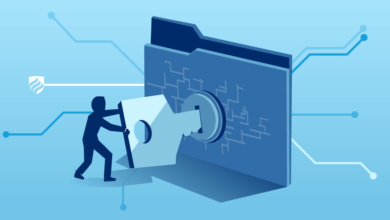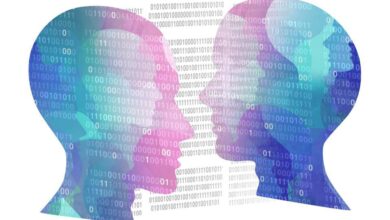Data ProtectionIT Compliance
The Legality of China’s Great Firewall: How Does the International Law Fare

The Internet Penetration Rate continues to rise every year, with nearly 4.57 billion active internet users, making up almost 59% of the global population. The top countries on the list of active internet users are China, India, and the United States, which are significantly ahead of others on the list.[1] But while most countries provide unrestricted internet access to people, China on the other hand provides highly regulated and monitored access. Moreover, access to the most prominent platforms is denied and is replaced with Chinese alternatives. There are many dictatorial regimes that block access to certain western platforms like YouTube, Facebook, and Google; but China is a step ahead in this regard and has the most rigid censorship of all because of a system called the Great Firewall of China. Freedom House, a non-governmental organization gave China a score of 11 out of 100 in the Freedom on the Net report, highlighting how it still continues to violate internet rights and freedom of its citizens, with the situation worsening with every passing year.[2]
History of the Internet in China and the Great Firewall
The Internet became commercially available in China in 1995. Prior to 1995, the Communist party had planned not to legalise the internet in China. Although, they changed their minds when they realised that it will make the country more powerful by inducing economic growth and modernisation. But with internet access, Chinese nationals were able to receive information from multiple sources. They started developing opinions which they could share and discuss on the internet. The Tiananmen Square massacre marked the beginning of China’s active regulation internet. Students organised these democratic protests using fax machines, which was a new piece of technology at that time.[3] The Chinese knew that the internet is a more efficient tool than a fax machine since it can also provide individuals with new information. Hence, the Communist party officially put up a firewall, which enabled active filters on internet access in order to curb further protests and dissent against the government.[4]
The Great Firewall (GFW) is a mix of legislation and technologies set up to regulate the internet in the People’s Republic of China (PRC). The term was first used in 1997 by Geremie Barmé and is a portmanteau of the Great Wall of China and the word ‘firewall’.[5] It was launched as a part of China’s Golden Shield Project and is operated by the Cyberspace Administration of China (CAC). The Communist Party uses this administrative body to express its will in the technical sphere. The functioning of GFW is quite simple, any new domain or platform which wants to enter Chinese cyberspace needs to adhere to their domestic regulations. Its purpose is to control access to certain foreign websites, banning prominent platforms like Facebook, Twitter, YouTube, Wikipedia, and Instagram. Just like the Great Wall of China, this firewall ensures control over what goes in and out of cyberspace. The GFW is made up of two software’s, one that automatically filters suspicious references and the filters all blocked Chinese websites.
The GFW relies on filtering methods like blocking Internet Protocol (IP) address, Transmission Control Protocol (TCP) packet filtering and forging, Domain Name System (DNS) spoofing, redirection, and filtering Uniform Resource Locator (URL) by transparent proxies. Apart from these, the CAC also uses active probing and proxy distribution. This advanced censor system monitors the interface between Chinese and global internet traffic.[6] Certain keywords like ‘democracy’ are filtered at the router level, and then this is further blocked in search results or emails using advanced software. Apart from these technological barriers, the PRC uses laws at the local and national levels to restrict internet access.
Circumventing the GFW
Even after PRC’s desperate measures to make the GFW fool-proof, people still find it simple to circumvent the firewall due to certain loopholes in the technology. They use proxy servers and Virtual Private Networks (VPN) to bypass this censorship system. This works by tunneling a path between the user and a server that is located outside of China. They further make use of the Tor browser and encrypted DNS to gain access to blocked websites. But the Chinese authorities keep updating the firewall and have blacklisted most VPN servers in the country to stop this circumvention.
Effectiveness of The GFW
The GFW has a direct influence on the people’s beliefs and ideologies, by showing them only a portion of all the information that is available out there. Just like George Orwell’s 1984, the PRC uses it to promote nationalist feelings and censor any form of dissent by presenting an online reality that is highly filtered and manipulated.[7] The idea behind this firewall is to suppress any radical thinking and create a population that follows the mindset which the state wants them to follow. It is used to further Communist Party ideas which reinstate that Tibet, Taiwan, and Hong Kong are parts of China; and that democracy is not the best form of government, rather a foreign agenda to incite protests in regions like Hong Kong and weaken China’s integrity. The purpose is to create a population that ensures the same party stays in power, by not presenting anything which could possibly lead to feelings of dissent. By making the firewall stronger and spreading propaganda by means like hired bloggers, the government has widened and strengthened its grip on the Chinese population.
This firewall has had a significant role in China’s economic growth by promoting protectionism. This is a trade policy where foreign imports are reduced and alternatives are produced in the domestic market itself, in order to strengthen the domestic economy. By using indigenous platforms like Baidu, Tencent Video, Qzone, and WeChat, China has found effective replacements for Google, YouTube, Facebook, and WhatsApp respectively.[8] The absence of any foreign tech giants has made Chinese innovations and start-ups thrive, which has significantly boosted the economy considering China accounts for almost a quarter of the active internet users globally with a staggering 700 million active users.[9]
Domestic Framework
The revised criminal law 1997 also called ‘CL97’ was the first cybercrime legislation that was passed in China in 1997. In 2016, the Internet Security Law of the People’s Republic of China was passed, which further formalised China’s internet censorship policies.[10] The Constitution of the People’s Republic of China does guarantee and protect essential freedoms like the freedom of speech. Article 35 of the Chinese constitution reads:
“citizens of the People’s Republic of China enjoy the freedom of speech, of the press, of assembly, of association, of procession, and of demonstration.”
Even after such a constitutional safeguard in place, PRC has acted otherwise in the recent course of time. The Constitution is largely unenforceable and plays little to no role in the functioning of China’s legal framework.[11] The judiciary and the courts have very little independence, which restricts them from enforcing constitutional violations by the state. This is worsened by the vague nature of most Chinese laws, which give the law enforcement more power than it should be possessing and putting the citizens in a precarious situation.
How does the International Law Fare?
Article 19 of the Universal Declaration of Human Rights (UDHR) states that “Everyone has the right to freedom of opinion and expression; this right includes freedom to hold opinions without interference and to seek, receive and impart information and ideas through any media and regardless of frontiers.”[12] Even though the UDHR does not have a strong normative character, it is generally accepted as customary international law since it does not need ratification. It is not an absolute right and is subject to some limitations under Article 29(2), but freedom of speech and expression are universally recognized as some of the core human rights.
China is one of the five permanent members of the United Nations Security Council (UNSC) and a signatory to the International Covenant on Civil and Political Rights (ICCPR). The ICCPR was proposed after the proclamation of the UDHR, in order to have an international instrument that safeguards certain human rights and is legally binding. Articles 1-21 of the UDHR were incorporated into the ICCPR with minor changes to make it obligatory. Article 19 of the ICCPR states “Everyone shall have the right to freedom of speech; this right shall include freedom to seek, receive and impart information and ideas of all kinds, regardless of frontiers, either orally, in writing or in print, in the form of art, or through any other media or his choice”. While Article 19(2) does permit certain restrictions to this freedom by law to maintain public order or in the interest of national security, Article 4 states that a derogation from the freedom of speech can be made in case of a national emergency threatening the integrity of the nation. But since China has not ratified the ICCPR, the instrument cannot be enforced against the violations that it has been carrying out, even though China should act in adherence to its purpose and objects.[13] The PRC continues to provide justifications for its censorship, which significantly overstep the restrictions laid down in the ICCPR. Its regulations are too expansive, and this continued abuse makes people question if China should un-sign the ICCPR.[14]
International law is usually applicable to States, but efforts have been made to extend it to Non-State actors like corporations or other entities. The words “every organ of society” in the preamble of the UDHR are not solely limited to states, but should also include corporations.[15] There are voluntary principles like the International Labour Organization’s- Tripartite Declaration of principles concerning Multinational Enterprises and The Organization for Economic Cooperation and Development’s (OECD)- Guidelines for Multinational Enterprises, which led to corporate giants like Microsoft and Google issuing codes of conduct in order to prioritise ethics in their business operations.[16] But since most of these codes do not specifically stress human rights, the Commission of Human rights in 2004 adopted the “The UN Norms on the Responsibilities of Transnational Corporations and Other Business Enterprises with Regard to Human Rights”. However, it failed in serving its purpose since it required ratification and faced criticism as claims were made that it shifts the onus to corporate responsibility in place of state responsibility. The Guiding Principles on Business and Human Rights is the current framework that some states and corporations have shown support towards and have implemented in their code of conduct.[17]
Conclusion
George Orwell in his renowned dystopian novel 1984, showed how a dictatorial regime can influence the masses and mould them into its own ideology. How they can reduce people to mindless automatons who have no opinion of their own, and anyone who shows dissent ends up facing the wrath of the State. China is following a similar route, and with them further going down this road, recognising human rights like the right to freedom of expression becomes the need of the hour. Technology should be used to empower and uplift, not to misdirect and suppress. And not just the state, but corporations need to take some responsibility as well, to have an industry-wide code of conduct that holds the interests and welfare of the general public into account.
With the new National Security Law imposed on Hong Kong, the freedom enjoyed by the citizens of the Semi-Autonomous Region gets as restricted as the ones in mainland China. With international law having no substantial effect, a lasting solution must come from the people of China, who have had a difficult life for a long period of time. They need to realise their basic human rights and work towards having a government that lets them have the freedom to think and express, rather than brainwashing them with propaganda. This can be expressed with the metaphor that water can get a boat to float, but it can also overturn it.[18]
This article can be cited as:
Pranav Nayara, The Legality of China’s Great Firewall: How does the International Law Fare, Metacept-Communicating the Law, accessible at https://metacept.com/the-legality-of-china’s-great-firewall:-how-does-the-international-law-fare/





